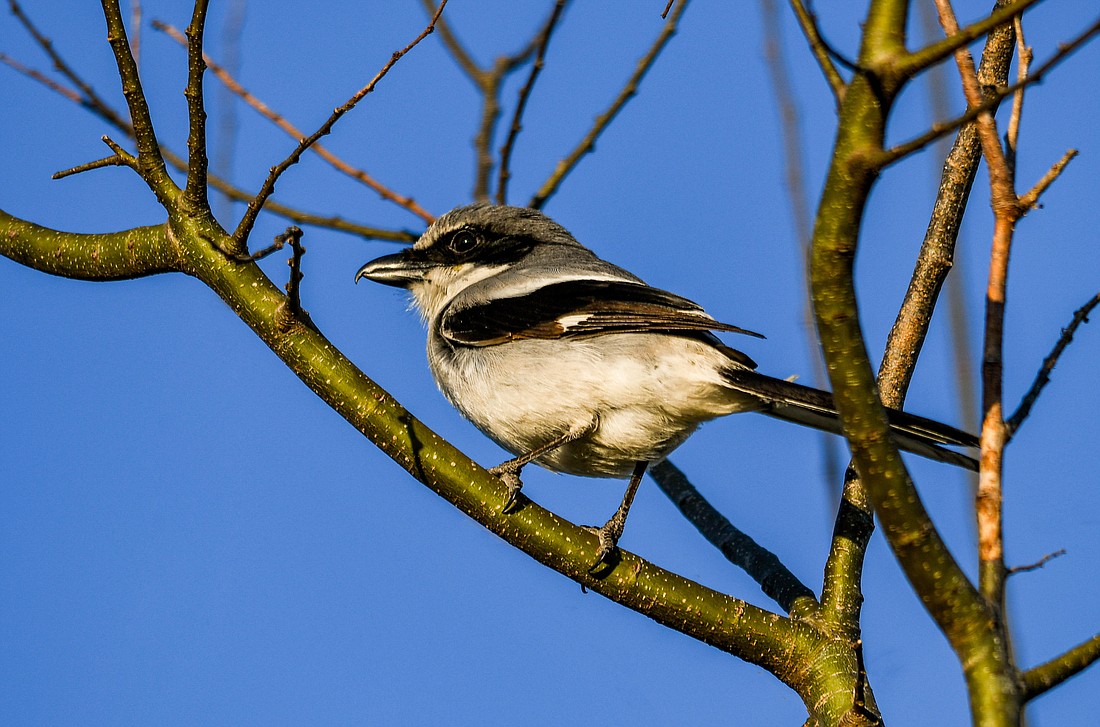- July 5, 2025
-
-
Loading

Loading

Loggerhead shrikes are carnivores that prey on other small birds, rodents and large insects.
And with a nickname like “butcher-birds”, these nine-inch, black-masked songbirds, with hooked, raptor-like bills, clearly have some grisly habits. Lacking a raptor's strong talons, they rely almost exclusively on their beaks for capturing, processing and ingesting prey.
So, to aid in the process of killing and eating, shrikes impale their prey on thorns, barbed wire or other sharp objects. They also impale prey as a way of storing food, returning to enjoy their leftovers at a later time. Indeed, having a well-provisioned cache of prey, called a “larder” or “pantry”, is especially beneficial during breeding season, when energy demands are high. And, though gory to us, caches do help a male shrike attract a mate.
Loggerhead shrikes are the only natural predator of the highly toxic lubber grasshopper, which other species avoid. To render lubbers edible, shrikes first decapitate them, then impale the noxious insects, leaving them out in the hot sun for a few days to detoxify.
One of two shrike species in North America, loggerhead shrikes are the only shrike found in Florida. They prefer open grassland habitats, with scattered trees and shrubs for nesting, roosting and perching. They've also adapted to perch on fences and wires, from which they can use their keen eyesight to scan for prey from above.
In the past 50 years, loggerhead shrike populations have declined by almost 80%. This trend coincides with the introduction of chemical pesticides in the United States, which kill or contaminate their prey. Habitat loss due to development, collisions with vehicles, and human disturbance likely also contribute to their decline.
Save our Seabirds is a non-profit organization whose mission is to rescue and rehabilitate
sick and injured birds, releasing as many as they can, while educating our community about
avoiding injuries and preserving habitats.